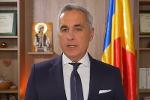The RON could experience problems again at the beginning of this year, as it did in 2008 and 2009, when the first two months came with quite an abrupt depreciation of the exchange rate.
Throughout 2009 the movements on the forex market were strictly supervised by the central bank, which did not think twice before intervening to temper those trends it regarded as excessive. Therefore, the question now is whether the NBR tolerates a new depreciation of the RON at the beginning of the year or not.
"We believe the NBR will continue to intervene on the market to contain a potential depreciation of the RON. A 4.5-RON euro seems bearable for the economy so that if the market reaches this level, the NBR might accept it," says Catalina Molnar, chief economist of RBS Bank Romania. She adds that the euro would thus gain an additional 4.5% against the 4.3 RON peak reached last year. "Such a depreciation is not excessive," she says. RBS forecasts the euro will reach 4.36 RON in March. On the average, the euro exchange rate will go up to 4.27 RON in 2010, 1% higher than the 2009 average of 4.24 RON.
The analysts of Erste Bank, the majority shareholder of BCR, believe the euro will stagnate at the current levels until the spring, anticipating a 4.23 RON/EUR exchange rate in March. Also in Vienna, Raiffeisen Bank's analysts see the euro going up to 4.3 RON in March.
Both Erste and Raiffeisen, however, anticipate the RON will strengthen in the second half of the year. Therefore the euro should go down to 4.2 RON in June and 4.1 RON in September, Erste analysts believe. Raiffeisen sees the euro five bani (100 bani - 1 RON) higher, that is 4.25 RON in June, with the exchange rate set to go down to 4.15 RON/EUR by December.
Central bank Governor Mugur Isarescu, however, in December reiterated the message he had sent the markets last spring, that the depreci





